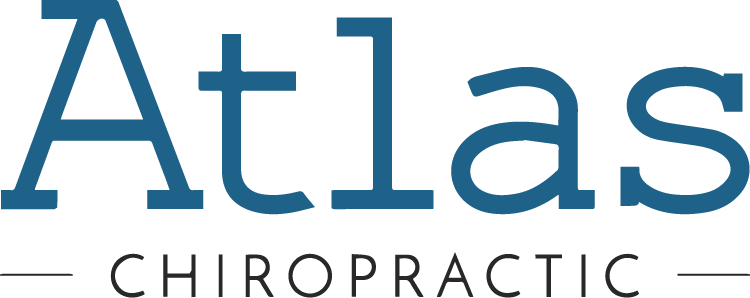At Atlas Chiropractic, we’re passionate about helping our patients in the Greater Boulder area, including Superior and Erie, achieve optimal spinal health and well-being. In today’s digital world, where we spend countless hours hunched over electronic devices, a common condition known as “tech neck” is on the rise.
Tech neck, or cervical kyphosis caused by prolonged use of smartphones, tablets, and laptops, disrupts the natural curvature of the cervical spine. This misalignment can lead to a variety of uncomfortable and potentially serious health problems.
This blog aims to educate you about tech neck, its impact on your health, and most importantly, how to prevent it. By following some simple tips and prioritizing good posture, you can keep your spine healthy and avoid the discomfort associated with tech neck.
Table of Contents
ToggleWhat is Tech Neck?
Tech neck, also known as cervical kyphosis caused by prolonged electronic device use, refers to the strain and misalignment of the cervical spine, the seven vertebrae in your neck. Ideally, these vertebrae form a gentle curve that helps support your head and distribute weight evenly.
The problem arises when we spend extended periods looking down at our phones, tablets, and laptops. This hunched posture puts excessive strain on the muscles and ligaments at the back of your neck, forcing them to hold your head up against the unnatural weight (the average head weighs around 10-12 pounds!). Over time, this strain can disrupt the natural curve of the cervical spine, causing it to become more rounded or kyphotic.
This disruption in the spine’s curvature is what leads to the various signs and symptoms associated with tech neck. Let’s explore these next.
The Impact of Tech Neck
The constant strain caused by tech neck can lead to a cascade of health problems that affect not just your physical well-being but potentially your mental state as well. Here’s a closer look at some of the common issues associated with tech neck:
- Muscle strain and pain: The constant effort to hold your head up against its weight in a hunched position can lead to overworked and strained muscles in the neck and upper back. This often manifests as pain, stiffness, and tenderness in these areas.
- Headaches: Misalignment in the cervical spine can irritate nerves that contribute to headaches, particularly tension headaches.
- Reduced range of motion: Over time, tight and strained muscles in the neck can restrict your ability to move your head freely. This can make simple tasks like turning your head to check traffic or looking up at the sky feel stiff and uncomfortable.
- Poor posture: Tech neck doesn’t just affect the neck. The hunched position can lead to rounded shoulders, a protruding upper back (kyphosis), and even lower back pain as your body tries to compensate for the misalignment in your spine.
- Disc problems: In severe cases, the constant strain on the cervical spine can put undue pressure on the discs between the vertebrae. This can lead to disc herniation, a condition where the soft inner core of the disc bulges or leaks out, causing pain, numbness, and weakness.
- Mental well-being: The chronic pain and discomfort associated with tech neck can contribute to stress and anxiety. Additionally, poor posture can lead to feelings of fatigue and decreased energy levels, further impacting your overall well-being.
Preventing Tech Neck
The good news is that tech neck is largely preventable! By incorporating some simple practices into your daily routine, you can keep your spine healthy and avoid the discomfort associated with this condition. Here are some key strategies:
Posture is Key
Maintaining proper posture while using electronic devices is the first line of defense against tech neck. Here’s how to achieve a neutral spine position:
- Head: Your head should be balanced on top of your spine, not jutting forward. Imagine a string attached to the crown of your head gently pulling you upwards.
- Shoulders: Keep your shoulders relaxed and pulled back, avoiding a rounded posture.
- Spine: Maintain a natural curve in your lower back. Don’t slouch or arch your back excessively.
- Elbows: Aim for your elbows to be bent at a 90-degree angle with your forearms supported on a table or armrest.
- Knees: Keep your knees bent at a 90-degree angle with your feet flat on the floor.
Ergonomics Matter
Optimizing your workspace ergonomics can significantly improve your posture and reduce strain on your neck and back:
- Monitor Height: Your monitor should be positioned so the top of the screen is at eye level or slightly below. This prevents you from hunching your neck forward to see the screen.
- Chair Adjustments: Invest in a supportive chair with good lumbar support that helps maintain your natural spinal curve. Adjust the chair height so your knees are bent at a 90-degree angle with your feet flat on the floor. Consider using a standing desk for part of your workday to further reduce sitting time.
Movement and Breaks are Essential
Our bodies weren’t designed to be in static positions for extended periods. Here’s how to incorporate movement into your routine:
- Take Breaks: Set a timer to remind yourself to take breaks every 20-30 minutes. During these breaks, get up, move around, stretch, and avoid immediately returning to a hunched position.
- Simple Stretches: Regular neck and shoulder stretches can help improve flexibility and reduce muscle tension. Gentle neck rolls, shoulder shrugs, and upper back stretches can be done throughout the day to keep your muscles loose.
Mindfulness is Your Ally
Being mindful of your posture throughout the day is crucial. Here are some tips:
- Be Aware: Pay attention to how you’re holding your body, especially when using electronic devices.
- Set Timers: Use timers on your phone or computer to remind yourself to check your posture and take breaks.
- Avoid Slouching: When you feel yourself starting to slouch, gently adjust your posture back to a neutral position.
By incorporating these preventative measures into your daily routine, you can significantly reduce your risk of developing tech neck and keep your spine healthy and pain-free.
Benefits of Chiropractic Care for Tech Neck
While the tips mentioned above can go a long way in preventing and managing tech neck, chiropractic care can offer additional benefits for those already experiencing pain and discomfort.
Chiropractors are trained in musculoskeletal health and focus on correcting misalignments in the spine and joints. In the case of tech neck, a chiropractor can perform targeted adjustments to the cervical spine to help:
- Improve Alignment: Manual adjustments can help restore the natural curve of the cervical spine, alleviating pressure on nerves and muscles.
- Reduce Pain and Stiffness: By improving alignment and reducing muscle tension, chiropractic adjustments can significantly reduce pain and stiffness associated with tech neck.
- Enhance Range of Motion: Improved joint mobility in the neck can lead to a greater range of motion, allowing you to turn your head and move more freely.
- Promote Better Posture: Chiropractic care can help improve your overall posture, reducing the strain on your neck and back and preventing future problems.
At Atlas Chiropractic, we understand the challenges of tech neck and offer a personalized approach to treatment. We will conduct a thorough examination to identify the specific areas affected by tech neck and develop a treatment plan tailored to your needs. This plan may include:
- Spinal Adjustments: Our gentle and targeted adjustments aim to restore proper alignment and improve your posture.
- Soft Tissue Therapy: Techniques like massage therapy can help relax tight muscles and reduce pain and stiffness.
- Stretching and Exercises: We will recommend specific stretches and exercises to improve flexibility and strengthen the muscles that support your spine.
By combining these techniques with the preventative measures discussed earlier, Atlas Chiropractic can help you alleviate tech neck pain, improve your posture, and maintain long-term spinal health.
Statistics on Tech Neck Prevalence
A study published in the International Journal of Occupational Medicine and Environmental Health found that up to 70% of young adults experience symptoms of tech neck.
Another study reported in YogaUOnline suggests that 75% of the world’s population is hunched over their devices for hours daily.
Physiotherapy, invited a group of participants. The study examined the correlation between the amount of time spent using phones and the prevalence of musculoskeletal complaints in the neck and shoulders. The findings revealed a significant association, meaning that people who reported using their phones more frequently were more likely to experience neck and shoulder pain, stiffness, or discomfort.
Understanding the Correlation
It’s important to clarify that correlation doesn’t necessarily equal causation. While the study suggests a link, it doesn’t definitively prove that phone use directly causes these problems. Other factors could be at play.
- Possible Explanations: However, the study’s findings align with what healthcare professionals understand about tech neck. Prolonged phone use often involves:
- Poor posture: Hunched posture with the head jutting forward puts excessive strain on the neck and shoulder muscles.
- Repetitive movements: Activities like texting or swiping can involve repetitive motions that can lead to muscle overuse and tension.
- Reduced movement: Staying in one position for extended periods can lead to tightness and stiffness in the neck and shoulders.
The Importance of Prevention
Even though the study doesn’t definitively prove causation, its findings strongly suggest that limiting phone use and practicing good posture while using electronic devices can significantly reduce the risk of developing neck and shoulder pain.
By expanding on the research with this explanation, you can effectively communicate the potential risks associated with excessive phone use and emphasize the importance of preventative measures.
Success Stories of Atlas Chiropractic Patients
“I used to suffer from constant neck pain and headaches from hunching over my laptop all day. After coming to Atlas Chiropractic for tech neck treatment, my posture has improved significantly, and the pain is almost gone. I can finally work without discomfort!” – Sarah B., a satisfied Atlas Chiropractic patient.
Conclusion
In today’s tech-driven world, tech neck has become a growing concern. The constant strain of hunching over our devices can lead to a cascade of problems, impacting not just our physical well-being but potentially our mental state as well.
The good news is that tech neck is largely preventable! By incorporating simple practices like maintaining proper posture, taking regular breaks from your devices, and performing regular stretches, you can significantly reduce your risk of developing this condition. Additionally, chiropractic care can offer targeted adjustments and exercises to improve your posture, alleviate pain, and promote long-term spinal health.
At Atlas Chiropractic, we are dedicated to helping patients in the Greater Boulder area, including Superior and Erie, achieve optimal spinal health and live pain-free lives. If you’re experiencing neck pain or discomfort associated with tech neck, we encourage you to schedule an appointment with us. We will work with you to develop a personalized treatment plan to address your specific needs and help you get back to enjoying your life without limitations.
Remember, taking care of your posture and incorporating preventive measures can go a long way in keeping your spine healthy and preventing tech neck. Let’s prioritize our well-being and embrace a tech-savvy lifestyle that doesn’t come at the cost of our physical health! Contact us today.

Schedule your FREE 15 minute consultation with Atlas Chiropractic
At Atlas Chiropractic, our Greater Boulder area chiropractors specialize in providing relief for individuals experiencing back, neck, or shoulder pain, as well as those dealing with headaches or vertigo. We offer specialized chiropractic care and tailored spinal adjustments, along with expert opinions and advice.





